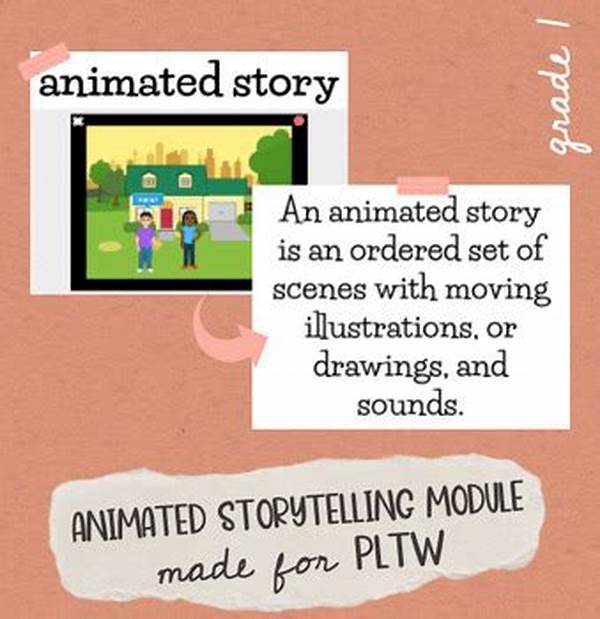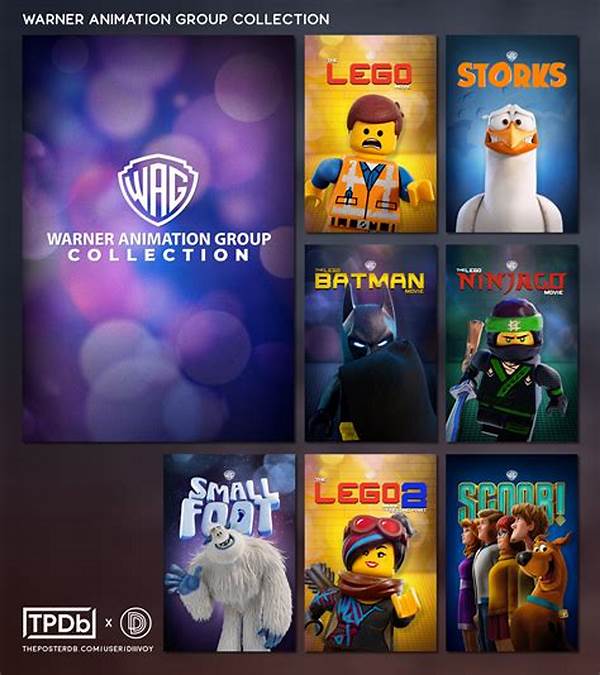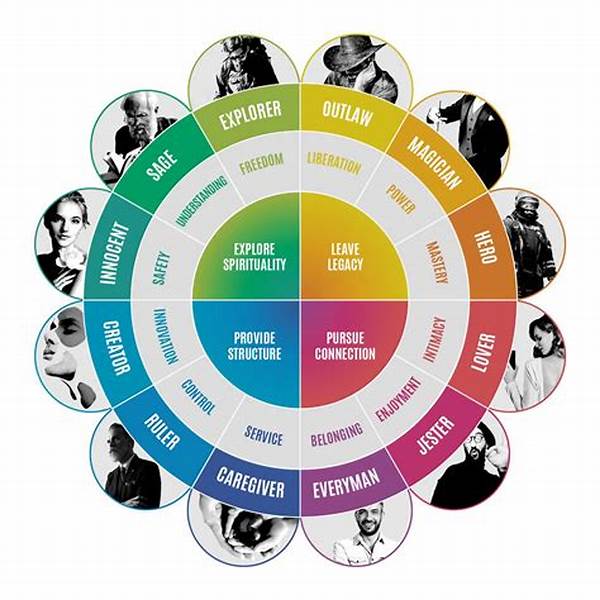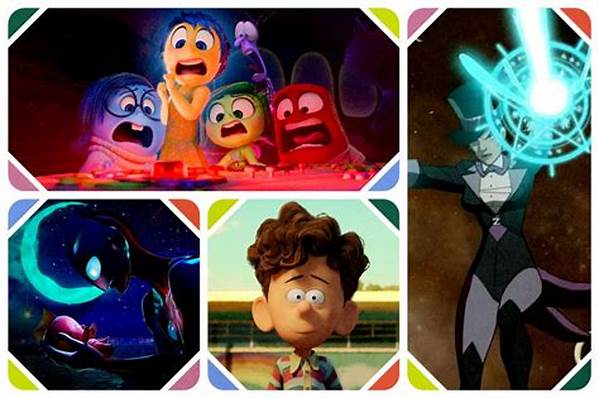Hey, ever sat down with a bowl of popcorn to watch your favorite animated movie and suddenly found yourself entranced not just by the vibrant visuals but also by the profound messages woven into its storyline? Welcome to the magical world of animated storytelling, where cultural themes are not just narratives but bridges connecting diverse societies. These animations cleverly wrap age-old traditions, societal values, and diverse cultures into tales that entertain and educate. Let’s dive into this fascinating realm and understand why cultural themes in animated storytelling are crucial in shaping our worldviews!
Read Now : Animated Adaptations Of Historical Legends
Unveiling the Power of Cultural Connections
In this digital age, animations are no longer just for kids. They’re the perfect vessels for cultural expression and cross-cultural communication. You might ask, “Why?” Well, because cultural themes in animated storytelling create connections that transcend geographical boundaries. They take us on journeys through different lands, showing us the heart of various cultures in ways that textbooks can’t. Whether it’s through powerful narratives like Disney’s “Coco,” which celebrates Mexican traditions, or Studio Ghibli’s “Spirited Away,” reflecting Japanese values, animated stories provide a window to our multicultural world. These narratives ignite an interest to explore, empathize, and appreciate diversity in a way that no other medium can.
Consider this: when cultural traditions are depicted in animated stories, they captivate the young and old alike, enchanting them with vibrant storytelling while subliminally instilling important societal values. We walk away more empathetic and more understanding, realizing that despite our differences, there’s a shared human experience that binds us all. So, next time you watch an animation, pay attention. You’re not just witnessing a story unfold; you’re connecting with a small piece of humanity. And that’s the magic of cultural themes in animated storytelling!
Essential Elements Upholding Cultural Narratives
1. Character Diversity: Ever noticed how diverse characters add depth? It’s these cultural nuances that enrich stories, making them relatable and engaging.
2. Tradition and Beliefs: Animated tales often integrate regional traditions, offering insights into different cultural spectrums and beliefs.
3. Language and Music: The use of native languages and traditional music scores amplifies authenticity, creating immersive cultural experiences.
4. Moral Lessons: Universal truths and moral teachings make cultural themes in animated storytelling not just entertaining, but educational.
5. Symbolism: Visual symbols can speak volumes, subtly embedding cultural wisdom and philosophies within the plot.
The Universal Appeal of Animated Narratives
Animated movies have changed the way we perceive stories, and that’s no small feat. They transcend age barriers, unifying audiences worldwide under a common narrative roof. How do they do it? By embedding cultural themes in animated storytelling. Characters come to life, not just as scripted figures but as symbols of cultures – whether it’s Simba of the African savannah teaching us life’s circle or Mulan breaking gender stereotypes in ancient China. These animated heroes and heroines make us cheer, cry, and reflect on our own cultural identities.
Moreover, the colorful landscape of animation serves as the perfect canvas for cultural expressions. Artists and writers use visuals to craft stories that celebrate diversity and promote understanding without spoken words. These stories are safe spaces where audiences can learn about different cultures, free of judgment or prejudice. It’s in these vibrant tales that cultural themes in animated storytelling truly shine—making us better humans, one film at a time.
The Dynamic Impact of Cultural Narratives
In animation, cultural themes act as guiding stars, shaping narratives that remain etched in our minds. Here are ten reasons why they’re so impactful:
1. Inspires empathy, encouraging viewers to walk in others’ shoes.
2. Breaks stereotypes, painting a true picture of diversified life.
3. Fosters respect, teaching the importance of cultural differences.
4. Promotes unity, uniting various communities under universal stories.
Read Now : Best In-flight Animation Movies
5. Educates youth, sowing seeds of understanding early on.
6. Preserves heritage, keeping ancient traditions alive.
7. Enhances creativity, pushing boundaries with diverse storytelling lenses.
8. Encourages dialogue, opening up conversations about cultural sensitivity.
9. Facilitates learning, through engaging and interactive storytelling.
10. Strengthens identity, helping viewers understand their roots better.
The Ripple Effect of Animated Storytelling
Ever wondered how an animated film can alter perspectives or spark movements? The secret lies in cultural themes in animated storytelling. These themes wield the power to challenge societal norms, influence opinions, and even inspire actions. Let’s take Disney’s “Zootopia.” It wasn’t just a fun tale about a bunny cop but also an astute social commentary on prejudice and racism, encouraging audiences to rethink biases. In essence, these cultural narratives act as catalysts for change, resonating with viewers on a deeper, emotional level.
But this magic isn’t reserved for Hollywood alone. Animation studios across the globe are weaving cultural themes into their artistic practices. Japanese anime, for instance, consistently drives home deep cultural lessons alongside breathtaking visuals and compelling characters. As we embrace these diverse narratives, we engage in a cultural exchange that enriches our perspectives on the world. It’s an invitation to explore without stepping beyond your screen. And in this shared experience, cultural themes in animated storytelling become a universal language of connection.
Celebrating Authentic Cultural Narratives
With each animated film we witness, a little piece of different cultures embeds within us, shaping the kaleidoscope of our cultural understanding. Isn’t that something extraordinary? These stories are no less than cultural ambassadors, teaching us without a word, showing us the beauty in diversity, and encouraging an embrace of different cultural legacies. Cultural themes in animated storytelling play an imperative role in shaping open-minded, inclusive societies, breaking chains of ignorance with creativity and grace.
And so, as we revel in these vibrant animations, let’s remember to celebrate these cultural narratives and the diversity they showcase. For every frame, every character, and every story holds a piece of the world’s cultural artistry, waiting to speak to us, only if we choose to listen.
Wrapping it All Together
To summarize, cultural themes in animated storytelling are more than just background noise to the main narrative. They are essential threads that weave multicultural tapestries, creating stories that elevate our understanding and appreciation of diverse cultures. By captivating audiences with colorful visuals and relatable characters, these animated masterpieces invite us into a collaborative dialogue with our global neighbors. Whether you’re a child discovering the world or an adult seeking fresh perspectives, these narratives hold invaluable lessons. Next time you hit play on an animated flick, remember the cultural wisdom delicately stitched within. It’s this unspoken narrative power that makes cultural themes in animated storytelling an essential art form for changing hearts and minds across the world.



